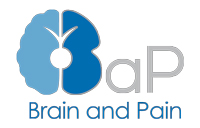tDCS: how does it work?
tDCS involves the application of a weak, painless electrical current to the brain using electrodes placed on the surface of the head. It is usually applied to the motor cortex. Depending on the properties of the tDCS (such as time, place and number of applications) different effects can be observed.
tDCS has minimal adverse effects
Recently, a compendium of tDCS experts published a review of more than 18,000 stimulation sessions (≈ 8,000 patients) in which no significant adverse events were found for multiple populations, including the elderly 1. The most common side effects reported are mild headache, tingling, itching, burning sensation and redness of the skin in the stimulation area. These side effects of tDCS usually disappear within a short time, within less than one hour after stimulation. Very rarely, the following side effects have been reported with the use of this technique: small changes in mood, temporary changes in thinking, cognitive side effects such as dizziness, drowsiness or confusion, or a feeling of electric shock.
Effectiveness of tDCS for pain relief
Many clinical trials show positive analgesic effects of tDCS on various chronic pain problems, such as trigeminal neuralgia, multiple sclerosis-related pain, fibromyalgia, visceral pain, or even cancer. Recent studies also suggest that tDCS may decrease pain sensitivity, increase central pain-inhibiting mechanisms, and reduce pain intensity, that is, this technique may modify the central pain mechanisms. Overall, non-invasive brain electrical stimulation techniques are a promising, low-risk, affordable and easily integrated approach to routine clinical practice.
A recent review by Vasegui et al (2014) concluded that there is sufficient evidence that stimulation with tDCS results in a decrease in objective pain scores and an increase in pain thresholds (i.e. increased pain resistance) in patients with chronic pain.2 This encourages further research to discover the most effective stimulation parameters and patient characteristics that best respond to this technique.
However, the heterogeneity among the studies (many of them conducted with small samples), determines that the evidence on the efficacy of tDCS at present is not fully consistent. A recent expert meeting concluded that tDCS has beneficial effects on different types of pain, but made modest recommendations on its use 3. The experts considered that there is sufficient evidence to recommend tDCS as a level C (possible efficacy) intervention for neuropathic pain of the lower limbs and level B (probable efficacy) for fibromyalgia. There is also enough evidence to recommend tDCS at a level B for treating major non-drug-resistant depressive episodes, one of the symptoms that accompany chronic pain.
1 Antal A, Alekseichuk I, Bikson M, et al. Low intensity transcranial electric stimulation: Safety, ethical, legal regulatory and application guidelines. Clin. Neurophysiol. 2017. p. 1774–1809.
2 Vaseghi, B., Zoghi, M., & Jaberzadeh, S. (2014). Does anodal transcranial direct current stimulation modulate sensory perception and pain? A meta-analysis study.Clinical Neurophysiology,125(9), 1847-1858.
3 Lefaucheur, J. P., Antal, A., Ayache, S. S., Benninger, D. H., Brunelin, J., Cogiamanian, F & Marangolo, P. (2017). Evidence-based guidelines on the therapeutic use of transcranial direct current stimulation (tDCS).Clinical Neurophysiology,128(1), 56-92.






